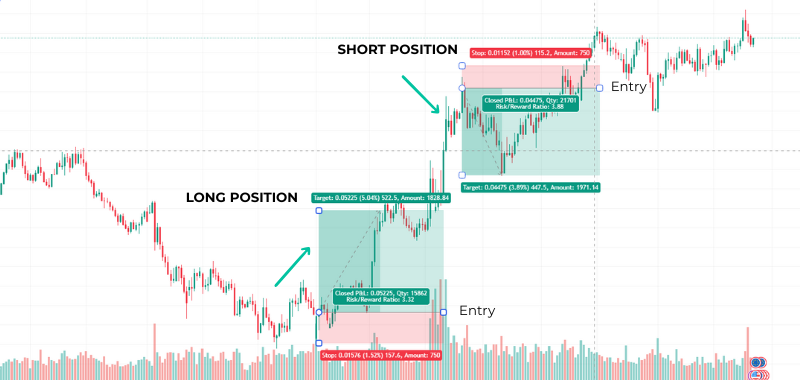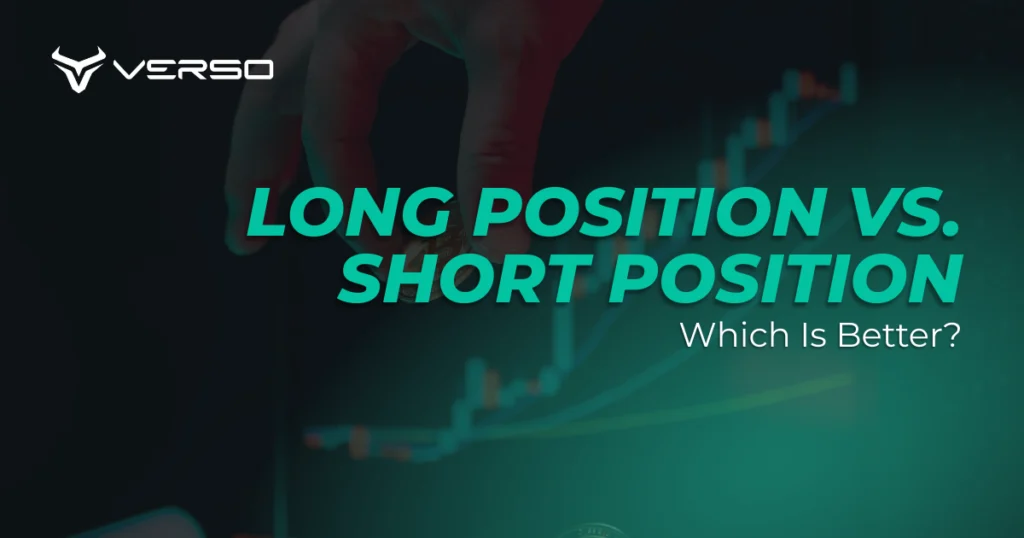
Choosing between a long position or a short position is one of the first decisions any investor needs to understand before putting money into the market. While the concept sounds simple, we’ve seen many people get confused especially about whether they should buy when prices are low or high. That confusion can be costly if you don’t fully grasp how both strategies work.
In this article, weI’ll clearly explain what it means to go long or short, their differences, risks, and which option might be better depending on your investment profile.
What is a Long Position?
A long position means you buy an asset expecting its price to rise. It’s the most traditional strategy in the market.
How it Works in Stocks and Crypto
- You buy shares of a company or cryptocurrencies at a price you believe is low.
- You hold that investment with the expectation that the price will increase.
- If the value rises, you sell higher than you bought and make a profit.
In my experience, this is where many people get confused: they think buying should always happen when the price is “high” because that shows strength. But in reality, the logic of a long position is to enter at a relatively low value to capture the later upside.
Example of Profiting from a Long Position
Imagine you buy Apple stock at $150 and later sell at $180. That $30 difference is your gross profit (before fees and taxes).
In crypto, the logic is the same: if you buy Bitcoin at $25,000 and it rises to $30,000, you’ve profited from your long position.
What is a Short Position?
A short position means you’re betting that an asset’s price will fall.
How Shorting Works in Practice
The classic process in stocks works like this:
- You borrow shares from a broker.
- You immediately sell them at a high price.
- When the price falls, you buy them back cheaper.
- You return the borrowed shares and keep the difference.
For example: you short 100 Tesla shares at $250. The price falls to $200. You buy them back and return them to the broker. You’ve made $50 per share, a total of $5,000.
Risks and Challenges of Short Positions
- Unlimited risk: If the price goes up instead of down, your losses can be very large.
- Margin calls: Since you’re using leverage, you may have to put up more money as collateral.
- Psychological factor: Betting against the market’s natural upward trend can be stressful.
In practice, many people don’t realize that shorting is used when the price is high and you expect it to fall, not the other way around. That logical mistake is very common.
Long vs Short: Key Differences
Profit Potential and Risk Exposure
- Long: Limited risk (you only lose what you invest) with unlimited profit potential.
- Short: Unlimited risk (if the price rises significantly) with limited profit (only until the asset reaches zero).
When to Go Long vs When to Go Short
- Long position: Ideal in bull markets or when you believe a company or asset will grow over time.
- Short position: Useful in bear markets, bubbles, or when you spot overvaluation.
I’ve noticed many beginners get stuck because they buy at high prices thinking the asset will keep rising. That’s where they confuse a “long” entry with a move that actually would have made more sense as a “short.”
Which Is Better for You?
The big question: which is better, long or short?
- For beginners: Long positions are generally the safest starting point. They’re easier to understand and have limited risk.
- For experienced traders: Short positions can be very profitable but require discipline, risk management, and strong emotional control.
- It depends on your context: In a bull market, most people profit from going long. In a bear or volatile market, well-executed shorts can be more profitable.
The key is not falling into the trap of thinking “buying high is bad” or “selling low is always good.” What truly matters is the expected price direction and the strategy you use to take advantage of it.
FAQs on Long and Short Positions
1. What is better, long or short?
There’s no one-size-fits-all answer. For long-term investors, long positions are the norm. For active traders, shorting can be a powerful tool.
2. Can beginners short stocks?
Technically yes, but it’s not recommended. The risks are high, and the mechanics are complex.
3. Which is more risky, long or short?
Shorting is riskier because losses have no theoretical limit.
4. How do long and short apply in crypto?
Exactly the same as in stocks, but with higher volatility. Many exchanges allow both with leverage.

